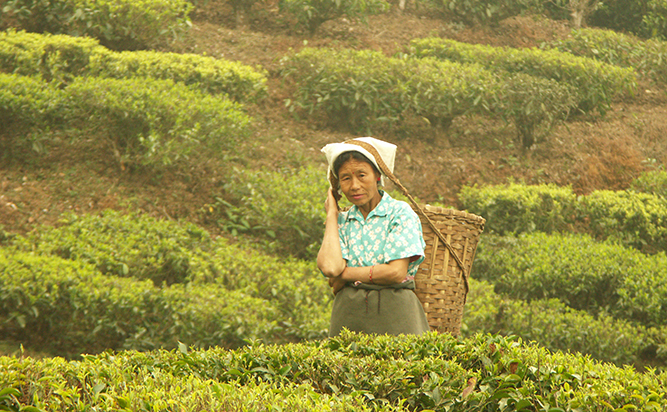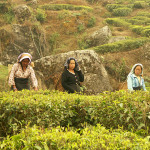Spring comes with a first tea.
Spring means to me when the first fresh teas come from Darjeeling. Can you recall the feeling when your room is pervaded by a fresh tea flavour, the tea is brightly gold – green in your cup and through your windows you can feel the first warm sunrays? Those sips are unforgettable. The aftertaste stays for many hours and colours our first sunny days into beauty.
The First Flush in Darjeeling has started.
This year´s winter was relatively short and warm. At some places, the fresh tea leaves shot in the end of January. The first batch of Darjeeling tea was processed on 16th of January already!
We brought the very first tea that was picked and processed in Darjeeling this year!
We are very pleased we could offer the very first tea that was picked in Darjeeling, it was marked as Ex-1. EX is a mark for smaller batches of tea bellow 50 kg, that are picked and processed together. Usual batch has around 100 kg and is marked as DJ or a Lot. Those are processed a bit later, when there is biger amount of picked tea leaves.
Already for few years the season is opened ny Rohini Tea Estate with their Jethi Kupi tea. They usually start one month sooner than the rest of the gardens. Why is that? Jethi Kupi comes from lower part of the garden called Jabarhat. Thanks to the low elevation, enough warmth and water from the mountain springs, the tea bushes of variety B157 flourish well even in the end of winter.
Jaberhat is rather small part of the garden that was planted in the years 2002 – 2003. First season happened in 2012. Since then, this tea is always the first spring swallow in Darjeeling. Those early teas have typical bright flowery and delicate spicy taste and flavor. And despite the early coming to our market, i tis a full-bodied First Flush.
- Sběračky/ Pickers
- Tvrdá práce/ Hard work
- Na plantáži/ Plantage
- Britské stroje/ British machinery
- Zpracování lotu/ Processing the lot
- Čerstvé lístky/ Fresh leaves
What is the best practice for preparing fresh Darjeeling tea?
The ways are many and i tis entirely up to your choice what would suit your style. Someone lets the tea steep very shortly and the flowery tones are the strongest. Someone preffers to give it more time to steep and enjoys the fullness and astringency. You can use a hot water that was just boiled or let it cool down to approx. 80°C. Tea can bare also more infusions than one, depends on a type of tea ware you are using. There are endless ways how to experiment and we really recommend to try new ways. It opens new dimensions of tastes and flavors.
Here we share one way how to approach Darjeeling tea.
Rohini Tea Garden
Rohini is located in the Kurseong valley of Darjeeling. The estate was closed for a period of 38 years from 1962 to 2000. From the old 1300 Hectares around 38 Hectares is still present. These teas are of the Chinese origin and in the second flush produce exquisite muscatel teas.
The total are of the garden is around 146 Hectares. Out of this 108 Hectares is young tea. These bushes have planted from 1996 onwards and they have not yet attained maturity. All the bushes are of the highest quality and they produce exquisite teas all around the year.
The garden is divided into four divisions. The lower division is called Jabarhat and is around 38.19 Hectares. The mid elevation divisions are called KOTIDHARA and PAILODHARA. These two divisions together are around 74.56 Hectares and it produces very high quality teas. It has been planted with AV2 and T-78 clones mostly. Tukuriya is the highest division at an average elevation of 4400 FT and stretches right up to Kurseong town and the area under production is 33.25 Hectares. This is mostly the old tea area which now today would be more than 100 years old. The entire garden is accessible by road except Pailodhora.









































